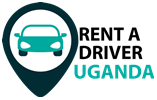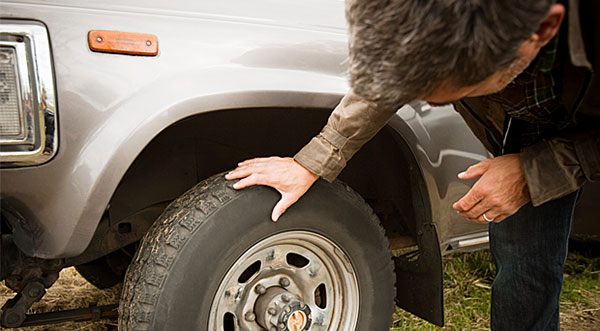
Step-by-Step Guide to Buying a New Car in Uganda
Buying a new car in Uganda requires understanding local regulations, financing options, and market dynamics. Rent A Driver Uganda will walk you through every step of the process, from initial planning to driving your new vehicle home.

Step 1: Determine Your Budget and Financing Options
Before you start shopping, establish a realistic budget that includes not just the car’s price, but all associated costs. In Uganda, consider the total cost of ownership including import duties, registration fees, insurance, and ongoing maintenance.
Calculate your total budget by considering your monthly income and expenses. Financial experts recommend spending no more than 20-30% of your monthly income on car payments and related expenses. Remember that in Uganda, you’ll need to factor in fuel costs, which can be significant due to fluctuating petroleum prices.
Explore financing options available in Uganda. Most commercial banks offer car loans, including Stanbic Bank, Centenary Bank, DFCU Bank, and Equity Bank. These loans typically require a down payment of 20-30% of the vehicle’s value and offer repayment periods of 1-7 years. Interest rates vary but generally range from 18-25% annually.
Consider hire purchase agreements offered by some car dealers, which allow you to pay in installments while using the vehicle. However, you won’t own the car until the final payment is made.
Save for additional costs including comprehensive insurance (typically 3-5% of the car’s value annually), registration fees, road licenses, and immediate maintenance items.
Step 2: Research Vehicle Options and Market Prices
Uganda’s car market offers both new imports and locally assembled vehicles. New imports primarily come from Japan, Dubai, and South Korea, while locally assembled vehicles are available from manufacturers like Kiira Motors and various assembly plants in Kampala.
Research reliable brands that perform well in Ugandan conditions. Toyota, Honda, Nissan, and Mitsubishi are popular choices due to their reliability, fuel efficiency, and availability of spare parts. Consider vehicles with good ground clearance for Uganda’s varied road conditions.
Compare fuel efficiency since fuel costs represent a significant ongoing expense. Smaller engines (1.0-1.5 liters) typically offer better fuel economy for city driving, while larger engines may be necessary for frequent long-distance travel or carrying heavy loads.
Check spare parts availability by visiting auto parts shops in areas like Katwe, Kisekka Market, or Ntinda. Popular brands typically have better parts availability and more qualified mechanics.
Step 3: Choose Between New Imports and Local Assembly
New imported vehicles offer the latest technology and design but come with higher import duties and taxes. Import duty is typically 25% of the vehicle’s value, plus VAT of 18%, withholding tax of 6%, and various other fees.
Locally assembled vehicles may qualify for reduced import duties on components and could be more affordable. However, the selection may be limited, and you should research the assembler’s reputation and after-sales service.
Consider certified pre-owned programs offered by some dealers, which provide newer vehicles with warranties at lower prices than brand-new imports.
Step 4: Find Reputable Dealers and Importers
Research established dealers with good reputations in Kampala and other major towns. Look for dealers who are authorized representatives of major brands and have been in business for several years.
Visit multiple dealerships to compare prices, service offerings, and customer reviews. Established dealers often provide better after-sales service, warranty coverage, and financing assistance.
Check dealer credentials by verifying their business licenses and asking about their import procedures. Reputable dealers should be transparent about their sourcing and import processes.
Ask about warranties and service packages offered by the dealer. Some dealers provide extended warranties or service packages that can add value to your purchase.
Step 5: Inspect and Test Drive Vehicles
Conduct thorough inspections even for new vehicles. Check for any shipping damage, ensure all features work properly, and verify that the vehicle matches the specifications you ordered.
Test drive in various conditions including city traffic, highway driving, and parking situations. Pay attention to engine performance, transmission smoothness, braking effectiveness, and overall comfort.
Verify documentation including the vehicle’s import documents, previous registration (if applicable), and any warranties or service records.
Check compliance with Ugandan standards including headlight alignment for left-hand traffic, appropriate mirrors, and any required modifications for local conditions.
Step 6: Negotiate Price and Terms
Research market prices for similar vehicles to establish a baseline for negotiations. Online platforms and visiting multiple dealers will give you a good sense of fair market prices.
Negotiate the total package rather than just the vehicle price. This includes extended warranties, service packages, accessories, and financing terms if applicable.
Ask about additional fees and ensure they’re clearly itemized. Some dealers may include fees for registration assistance, delivery, or pre-delivery inspection.
Get all agreements in writing before making any payments. Ensure that delivery timelines, warranty terms, and any promised services are documented.
Step 7: Secure Financing and Insurance
Finalize your loan application with your chosen financial institution. You’ll typically need to provide employment verification, bank statements, identification documents, and proof of income.
Arrange comprehensive insurance before taking delivery of the vehicle. Compare quotes from multiple insurance companies including UAP Insurance, Jubilee Insurance, and ICEA Lion. Comprehensive coverage is mandatory for financed vehicles and highly recommended for all cars.
Understand insurance coverage, including third-party liability (legally required), comprehensive coverage, and any additional options like personal accident coverage or emergency roadside assistance.
Step 8: Complete Legal Documentation and Registration
Obtain a Certificate of Fitness from the Uganda National Bureau of Standards (UNBS) if required for your vehicle type. This ensures the vehicle meets safety and environmental standards.
Register the vehicle with the Uganda Revenue Authority (URA) and obtain number plates. This process includes paying registration fees and obtaining a logbook in your name.
Get a road license from the licensing office, which must be renewed annually. The fee depends on the vehicle’s engine size and type.
Ensure proper documentation including your driving permit, vehicle registration, insurance certificate, and road license before driving the vehicle.
Step 9: Take Delivery and Final Inspection
Conduct a final inspection before accepting delivery. Check that all agreed-upon accessories are installed, the vehicle is clean and undamaged, and all systems function properly.
Review all documentation including warranties, service schedules, owner’s manuals, and spare keys. Ensure you understand the warranty terms and service requirements.
Get orientation on the vehicle from the dealer, including explanations of all features, maintenance requirements, and recommended service intervals.
Verify emergency equipment including spare tire, jack, warning triangle, and first aid kit, which are legally required in Uganda.
Step 10: Plan for Ongoing Maintenance and Support
Establish a relationship with a qualified service center, preferably an authorized dealer or certified mechanic familiar with your vehicle brand.
Understand warranty terms and ensure you follow required service schedules to maintain warranty coverage. Keep all service records organized.
Budget for ongoing costs including regular maintenance, fuel, insurance renewals, annual road licenses, and periodic vehicle inspections.
Join owner communities or online forums for your vehicle brand to share experiences and get advice on maintenance and common issues.
Important Tips for Success
Be patient throughout the process. Rushing can lead to poor decisions or overlooking important details. Good deals and the right vehicle are worth waiting for.
Work with professionals including experienced dealers, qualified mechanics for inspections, and reputable financial institutions for loans.
Keep detailed records of all transactions, communications, and agreements throughout the buying process.
Plan for the unexpected by having a small buffer in your budget for additional costs that may arise during the purchase process.
Consider the long-term relationship with your dealer and service providers, as ongoing support can be valuable for years after your purchase.
Final Considerations
Buying a new car in Uganda requires careful planning and attention to detail, but following this step-by-step process will help ensure a successful purchase. Take time to research your options, understand all costs involved, and work with reputable professionals throughout the process.
Remember that the cheapest option isn’t always the best value. Consider reliability, after-sales support, and total cost of ownership when making your decision. With proper planning and research, you’ll find a vehicle that serves your needs reliably for years to come.



